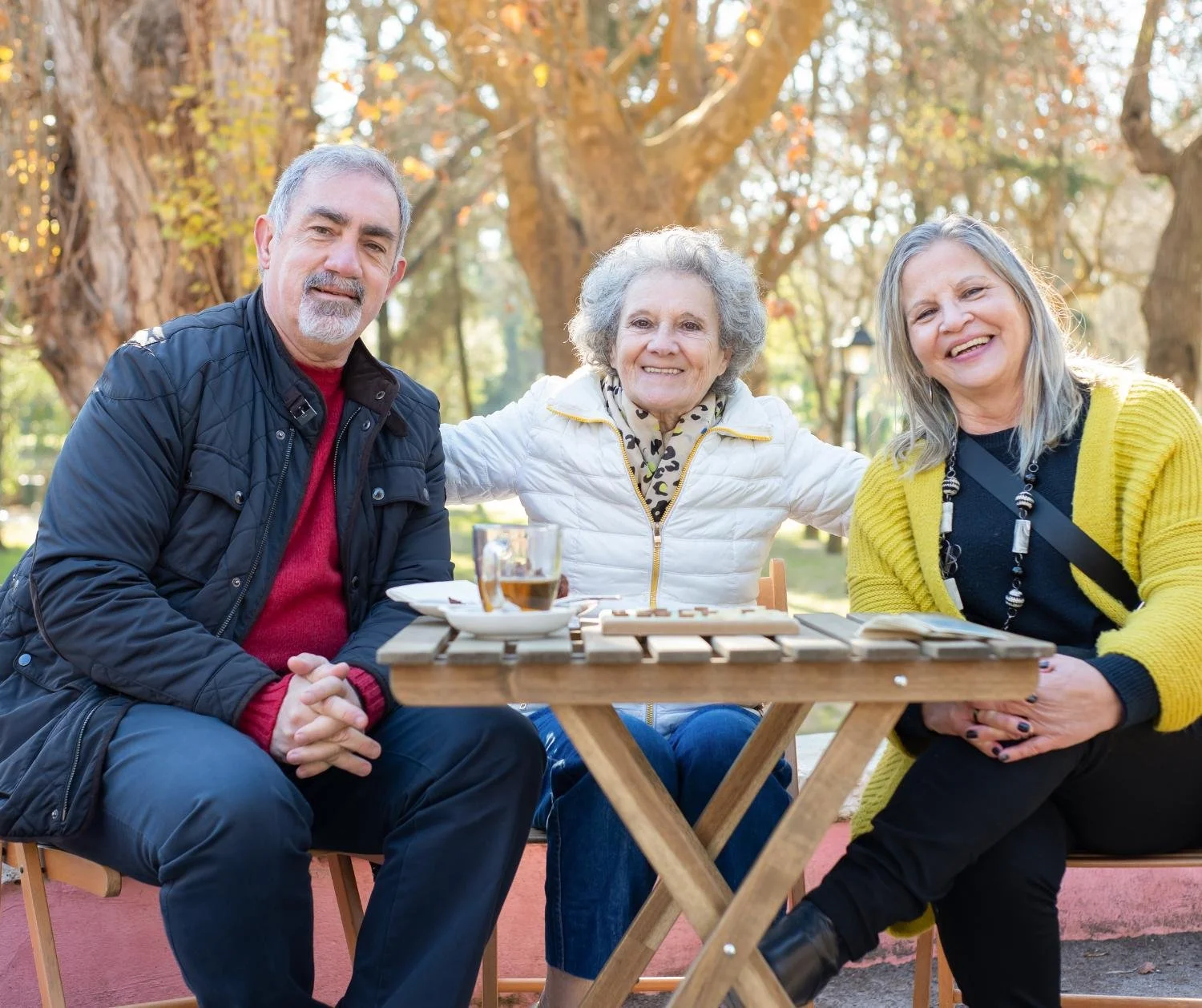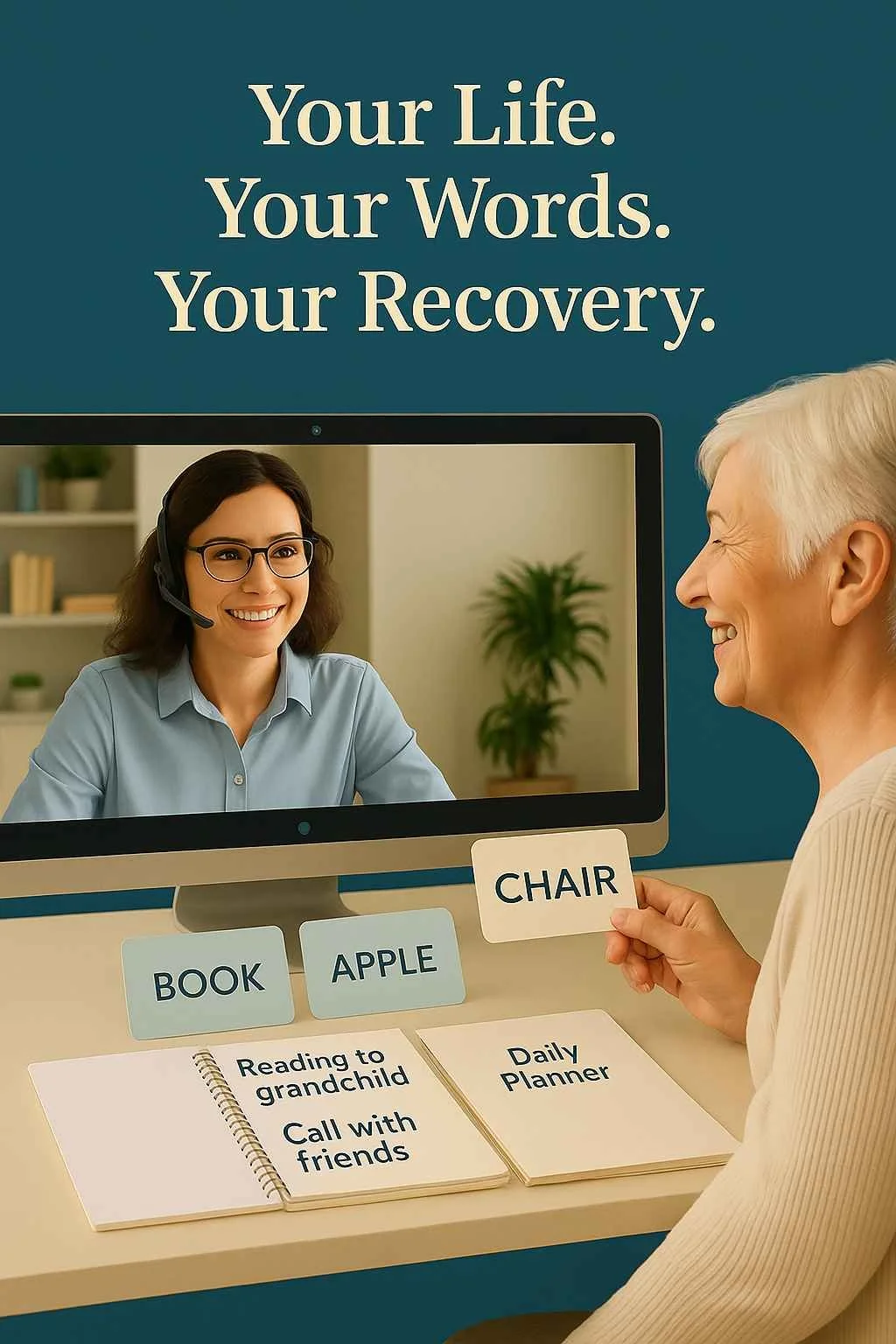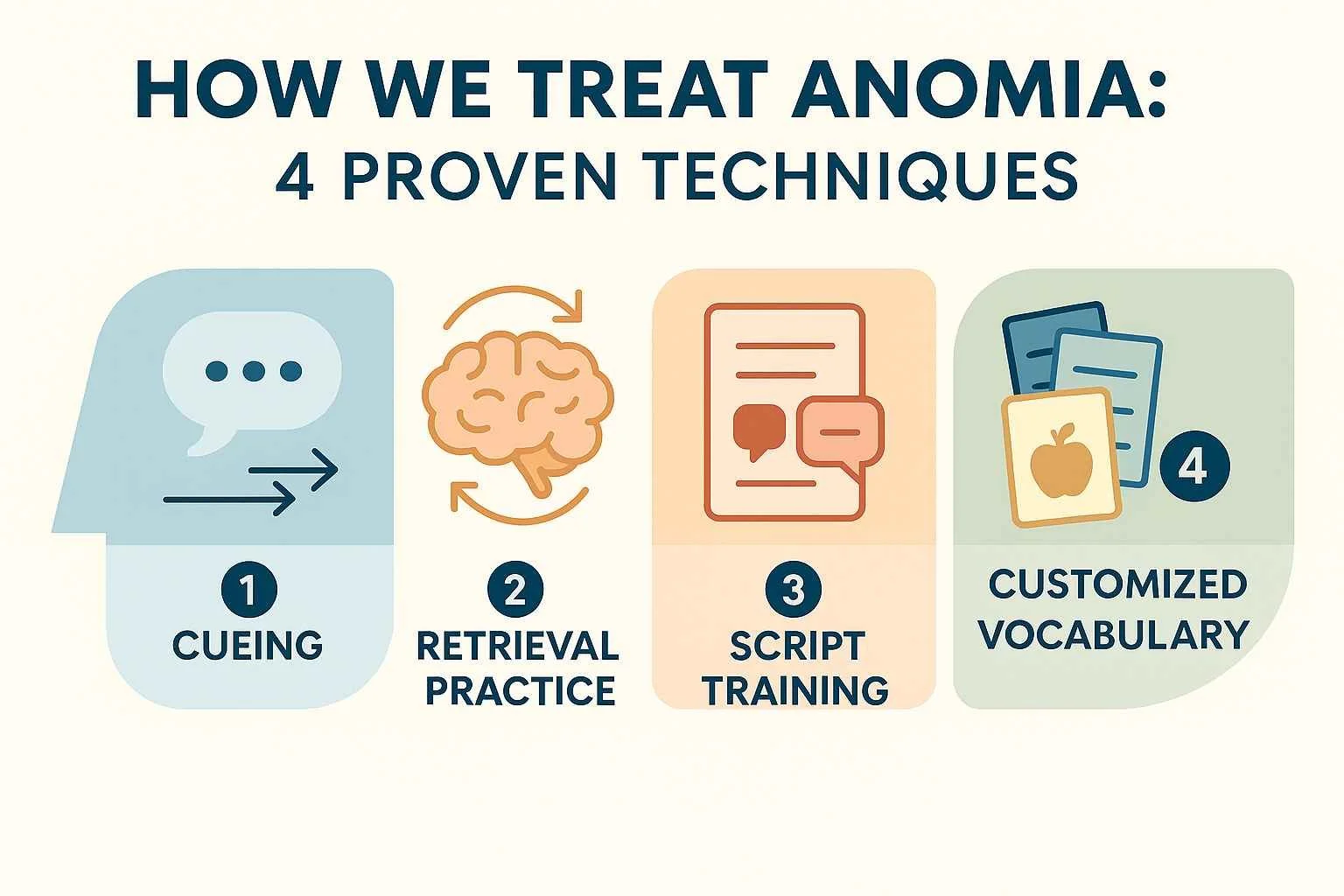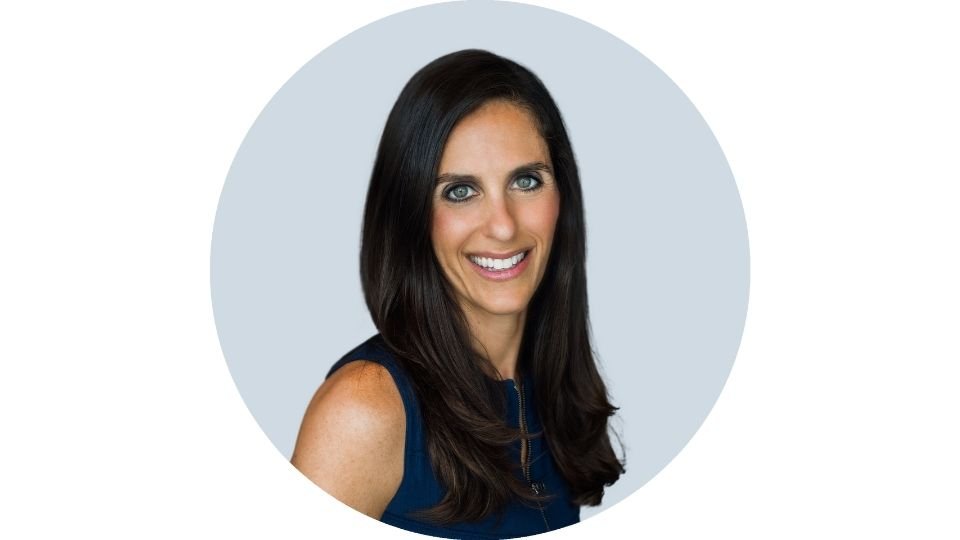Anomia Treatment That Focuses on Personalized Recovery
Living with chronic aphasia can feel isolating. It affects more than just speech. It can change how someone sees themselves and how they connect with others.
Personalized recovery gives people a chance to reconnect with their voice in a way that fits their life. By focusing on the person, not just the condition, speech therapy becomes more effective and more meaningful.
Key Takeaways:
Definition: Anomic aphasia is a mild type of aphasia that causes difficulty finding the right word, especially names of people, objects, or places.
Diagnosis: Speech-language pathologists diagnose anomic aphasia through structured language assessments and real-life conversation analysis.
Treatment Approach: Personalized language therapy supports recovery by focusing on specific language skills, communication goals, and daily needs.
Speech Therapy Techniques: Effective anomia treatment may include cueing, retrieval practice, script training, and customized vocabulary exercises
Why Personalized Recovery Matters in Anomic Aphasia Therapy
What Anomic Aphasia Therapy Looks Like
Frequently Asked Questions About Anomic Aphasia Treatment
What Is Anomia?
Anomia is a language disorder that causes difficulty recalling or producing the correct word. Most commonly, people with anomic aphasia experience difficulty naming individuals, objects, or places. They may pause mid-sentence, substitute vague words like “thing,” or describe something instead of naming it directly.
Anomic aphasia is considered one of the mildest forms of aphasia, but it can still have a significant impact on everyday communication. Anomic aphasia often follows a neurological event such as a stroke or traumatic brain injury. It is especially common after damage to language-related areas in the left hemisphere of the brain.
Common symptoms of anomic aphasia include trouble with word retrieval, difficulty with word selection, and frequent substitutions with general terms. In some cases, individuals may experience category-specific anomia or modality-specific anomia, which affect specific types of words or sensory pathways.
How Is Anomic Aphasia Diagnosed?
Anomic aphasia is typically diagnosed after brain damage from stroke, brain injury, tumors, or progressive neurological conditions such as Alzheimer's disease.
Brain imaging tests, such as magnetic resonance imaging (MRI) or CT scans, may be used to confirm the location and extent of brain damage and assist in making a proper diagnosis.
Speech-language pathologists assess language performance and evaluate other co-existing communication disorders by using structured verbal tests. These evaluations can distinguish severe aphasia from milder types.
Specifically, the assessment for anomic aphasia will examine language comprehension, language processing, lexical retrieval, word recall, and correct naming.
Real-life conversations are also analyzed to observe how the person communicates in everyday settings and if they can recall the correct word during casual conversation.
Recognizing patterns in language behavior helps professionals confirm the presence of anomia and determine the most effective path forward for anomia speech therapy.
Why Personalized Recovery Matters in Anomic Aphasia Therapy
Anomic aphasia is a language disorder that affects people in different ways, depending on which parts of the brain are involved and what kind of life the person leads.
Some people may struggle most with names, while others have trouble putting sentences together. A personalized recovery plan respects those differences and focuses on what matters most to each person.
Instead of following a strict set of exercises, personalized therapy for anomic aphasia is tailored to the individual’s daily life, habits, and relationships.
This kind of care leads to real progress because it feels useful and relevant. It helps people rebuild their communication skills in ways that fit their individual personalities and lifestyles.
Critical Role of Individualized Treatment for Anomic Aphasia
No two people recover from a language disorder like anomic aphasia in the same way. Brain injuries, learning history, personality, and life roles all shape the path to recovery. A one-size-fits-all approach often misses the deeper needs behind someone’s language struggles.
Individualized treatment takes those needs seriously. It builds on a person’s strengths, works with their challenges, and honors their values. For example, a parent may focus on reading to their child again, while a retiree may want to tell stories from their life.
Language Performance in Everyday Life
Speech therapy becomes more effective when it mirrors real life. When goals are linked to real-life situations, such as making a grocery list or joining a group conversation, progress feels more natural and lasting.
Personalized activities help build confidence by focusing on what each person needs to say every day. These exercises strengthen the brain’s language processing networks while making life feel more connected and manageable.
Speech Therapy for Aphasia
Check out our blog on speech therapy for aphasia for more information!
What Anomic Aphasia Therapy Looks Like
Anomia therapy is most effective when it reflects the person, not just the diagnosis. Anomic aphasia is considered one of the mildest forms of aphasia, which often allows for better recovery and retention of certain language abilities.
Speech therapy for anomic aphasia doesn’t just focus on word retrieval. It also supports emotional healing, relationship repair, and renewed confidence. Every session is tailored, and recovery continues long after the call ends.
Step-by-Step Aphasia Rehabilitation
Aphasia rehabilitation begins with a clear picture of how language has changed and what matters most to the person in recovery. Each step builds upon that foundation to support meaningful and lasting progress.
Assessment of language skills
A professional will assess how well you speak, understand, read, and write to determine where support is needed most. Identifying the leading causes of aphasia is also an essential part of the evaluation.
Daily communication check-in
They will explore how challenges show up in real-life situations, such as conversations, texting, or following directions.
Personal background and goals
Your daily roles, interests, and experiences shape how a professional designs your therapy.
Collaborative planning
You will work with the expert to choose speech therapy goals that reflect what you want to say and do in your everyday life.
Speech Therapy for Adults Quiz
Take our quiz to find out if speech therapy is right for you or your loved one.
Tools Used in Anomic Aphasia Therapy
Anomic aphasia therapy uses a range of tools designed to improve word recall and boost real-life communication:
Cueing techniques: Gentle prompts help activate the brain’s word networks and ease frustration.
Retrieval practice: Structured repetition strengthens memory for important words and phrases.
Script training: Practicing routine conversations prepares you for social or functional moments like greeting someone or ordering a meal.
Customized vocabulary: Sessions include words and phrases based on your interests, habits, and lifestyle.
Real-world practice: We use tasks like role-playing, storytelling, or describing pictures to apply language in ways that feel natural.
Support Beyond the Clinic
Support from family and friends plays a vital role in aphasia recovery. Encouragement at home can reduce stress, boost confidence, and make daily communication easier.
Loved ones can help by listening patiently, giving time to speak, and practicing communication strategies together. These everyday efforts often lead to stronger progress than speech therapy alone.
Frequently Asked Questions About Anomic Aphasia Treatment
1. Who treats anomia?
Anomia is treated by licensed speech-language pathologists who specialize in the treatment of communication disorders. These professionals assess how a person’s brain processes language and develop therapy plans that match their daily needs.
They also provide guidance to family members and caregivers to support language recovery outside of sessions. Progress is tracked closely, and therapy is adjusted as the person improves.
2. What is category-specific anomia?
Category-specific anomia is a word-finding problem that affects only one type of category, like animals, tools, or foods. A person might speak fluently but consistently struggle to name items within a specific group. This pattern suggests that the brain stores word knowledge in category-based networks that can be selectively damaged.
Anomic aphasia therapy focuses on rebuilding access to the affected category with structured naming and memory tasks. Improvement depends on how isolated and severe the naming breakdown is.
3. What is the link between anomia and Alzheimer’s disease?
Anomia often appears early in Alzheimer’s disease as people begin having trouble recalling specific names or words. They might describe something in detail but not be able to name it directly. This happens because Alzheimer’s affects brain areas that support language, especially in the left temporal lobe.
Word-finding becomes harder over time, leading to vague or repetitive speech. Speech therapy can help preserve naming skills and teach workarounds for daily communication.
4. Who is most at risk for aphasia?
Older adults who have had a stroke are at the highest risk for aphasia. Other causes include traumatic brain injuries, brain tumors, and progressive conditions like Alzheimer’s disease. Risk increases with age, high blood pressure, and a history of stroke or brain infection. Aphasia can affect anyone if the language centers of the brain are injured. Early diagnosis and therapy can make a big difference in recovery.
How Connected Speech Pathology Can Help
Connected Speech Pathology provides personalized treatment for anomic aphasia through one-on-one online therapy sessions with licensed speech-language pathologists. These sessions focus on improving speech abilities by targeting the word-finding difficulties that define anomic aphasia. Each therapy plan is built around the person’s goals, such as recalling names, engaging in conversation, or managing daily routines with less frustration.
All therapy takes place remotely, allowing clients to build language skills in their everyday environment. This setting makes gains more relevant and lasting because people practice speaking in the places they live and communicate.
Family members can easily join sessions to observe or participate, which helps support recovery between appointments. Connected Speech Pathology has used this online model for years with strong results.
Anomic aphasia often affects people long after a stroke or brain injury, making consistent, long-term support essential. Our speech-language pathologists understand how language recovery works over time and adjust therapy to keep it effective. Each session is personal, focused, and designed to help clients regain connection and confidence through language.
Summary
Anomia affects more than just words; it impacts connection and identity. Personalized therapy helps rebuild language in ways that feel meaningful and practical. With expert support and involvement from loved ones, recovery becomes part of daily life.
About the Author
Allison Geller is a communication coach, speech-language pathologist, and founder of Connected Speech Pathology, an international online practice providing professional communication coaching and speech therapy for children, teens, and adults. With more than two decades of experience, she has worked in medical and educational settings, published research on aphasia, and leads a team of specialists helping clients improve skills in public speaking, vocal presence, accent clarity, articulation, language, fluency, and interpersonal communication.









